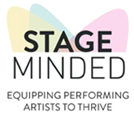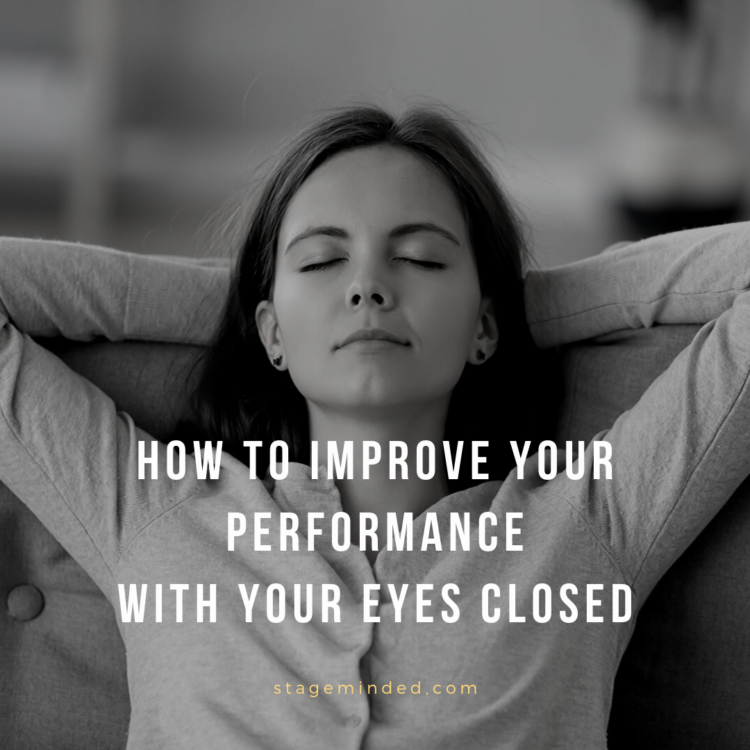How to improve your performance with your eyes closed
It’s the stuff that dreams are made of – improving your performance with your eyes closed – but how do we harness the power of mental imagery in reality?
If you’ve seen Stephen Spielberg’s Disney live-action take on Roald Dahl’s classic The Big Friendly Giant (The BFG), you’ll be familiar with the “360 Dream Tree”. This mighty tree sits under a bright starry sky in the middle of a grassy marsh. Can you picture it? It is said that The BFG has very sensitive ears which enable him to listen for dreams and locate them by sound, as they are invisible. He catches the dreams like butterflies and transfers them into jars.
“The matter with human beans,” the BFG went on, “is that they is absolutely refusing to believe in anything unless they is actually seeing it right in front of their own schnozzles.“
Roald Dahl, The BFG
So before you head over to Pinterest and search “catching dreams in mason jars” (it’s official, mason jars are an obsession!), here’s a quick tip:
Use all your senses to help you conjure up positive images in your mind.
Whether it’s from previous experience or something you’ve always wanted to try, the use of imagery is a way of achieving your goals.
It is useful for calming nerves and may even strengthen your muscles!
So are you ready to embrace this new skill?
Chances are you’ve actually been practicing mental imagery for a while now, you just haven’t been aware of it. That quick run through of your dance or music piece? Or picturing the exam room before you arrive at the studio, are all examples of imagery. Metaphors in your ballet class?
“Try to imagine you are reaching the crown of your head to touch the ceiling, and feel your neck elongate as your arms float to second, like the wings of a swan.”
Now that you’re more aware of how mental imagery is used, take some time to think of some examples you have experienced before.
Did you know that your brain can’t tell the difference between something you experience in real life and something you imagine in your mind?
To some extent this can be useful, as long as it is a positive mental image. Our mind does do its fair share of conjuring up negative images as a way of keeping us safe, aka the fight or flight mechanism. Of course, this has its place in our lives, but we’re here to improve your performance!
The bottom line is, practicing positive experiences in our mind can increase the likelihood of achieving positive outcomes in reality.
A great example of this is an injured performer I know who had a back injury. During her time spent in a full body brace, she used mental imagery to practice pirouettes. Without those everyday distractions we experience as performers and with 100% success rate, using the power of the mind, this dancer found that she could consistently perform 6 pirouettes in a row soon after her recovery. Cool huh?!

So what are the senses you can engage to start using this practice?
- Sight
- Hearing
- Smell
- Touch
- Kinaesthetic (your body felt-sense)
- Thoughts
- Emotions
Can you smell the hairspray in the dressing room? Can you picture the dry ice on the stage? Can you hear the first note played by the orchestra? Can you feel the grip of your shoes on the surface of the stage? Can you imagine your whole body, mind and spirit working in unison?
Or do you feel your nerves rising? Perhaps you can harness this atmosphere you’ve constructed in your mind to develop your confidence, and use those performance nerves to bring out the best in you.
Just like The BFG, you too could have your own ‘workshop’, filled with mental imagery that you can draw on when you’re in need… or when you just want to practice your latest performance piece while you’re doing daily tasks.
You can’t always be dancing your heart out but the great news is, you can use your mind to improve your performance, even when you’re chilling out on the couch… and research shows your performance will be smoother by practicing with mental imagery.
A human being always acts and feels and performs in accordance with what he imagines to be true about himself and his environment.
Maxwell Maltz,
Keen to learn more? I have created an entire module on how to use mental imagery to improve your performance as part of Mindset School. Find out more here.
🙂 Philippa

